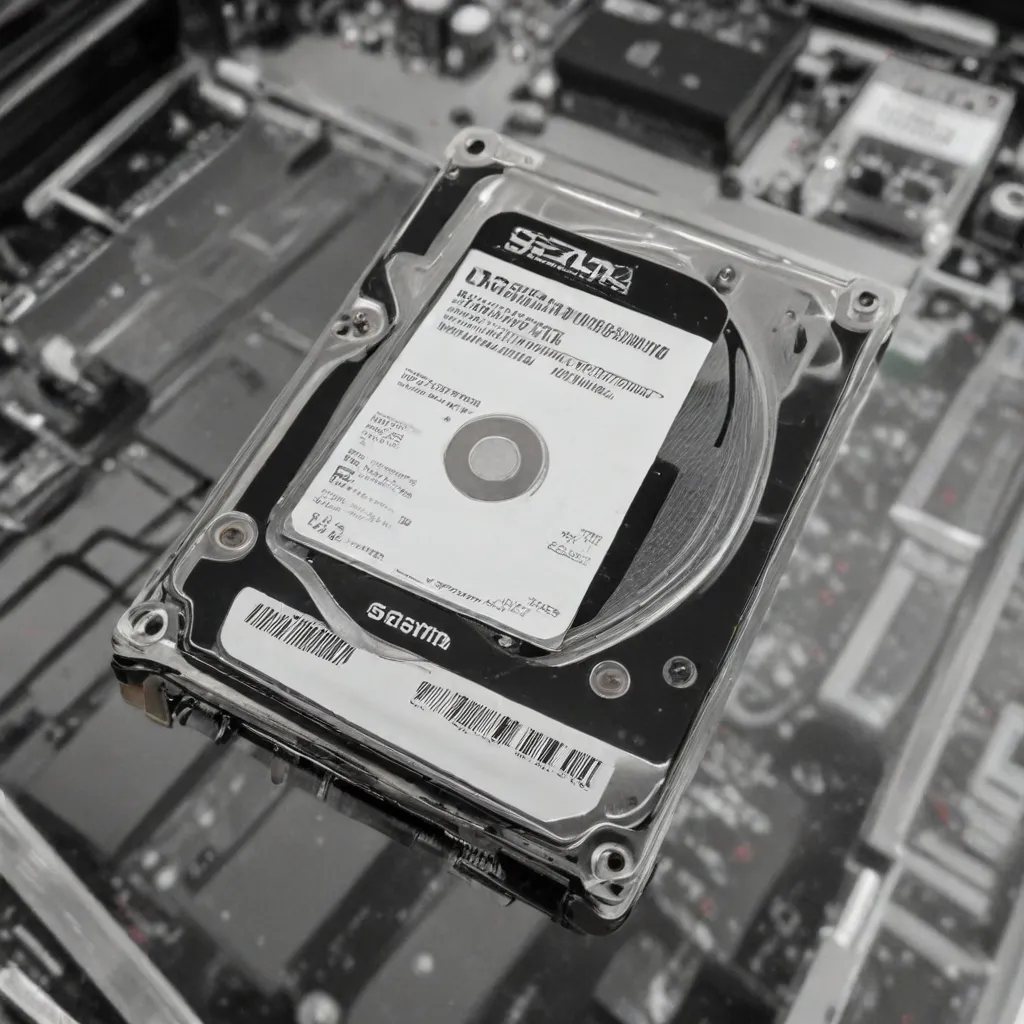
Understanding SSD Failure Modes
Solid-state drives (SSDs) have revolutionized data storage, offering faster performance and increased reliability compared to traditional hard disk drives (HDDs). However, like any storage technology, SSDs are not immune to failures. Understanding the common failure modes of SSDs is crucial when attempting to recover data from a failed drive.
One of the primary reasons for SSD failure is the degradation of the underlying NAND flash memory cells. Over time, the cells can wear out, leading to read/write errors or complete unresponsiveness of the drive. This is known as “flash wear-out.” Additionally, SSD controllers can encounter firmware-related issues or experience unexpected power loss, which can cause the drive to become unresponsive or corrupted.
Assessing the Extent of the Failure
When faced with a failed SATA SSD, it’s important to assess the extent of the damage before attempting any recovery efforts. Start by connecting the drive to a working computer and checking if it is recognized by the BIOS or operating system. If the drive is not detected at all, it may indicate a more severe hardware failure, such as a malfunctioning controller or damaged NAND chips.
If the drive is partially recognized, with only limited access to certain files or folders, it could suggest a logical or firmware-related issue. In this case, you may be able to recover some or most of the data using specialized data recovery software or techniques.
Attempting DIY Data Recovery
Before considering professional data recovery services, you can try some DIY techniques to recover data from your failed SATA SSD. However, it’s crucial to understand the risks involved, as improper handling or tampering with the drive can further damage the data and reduce the chances of successful recovery.
Option 1: Using Data Recovery Software
There are several data recovery software tools available that can help you attempt to recover data from a failed SSD. Some popular options include:
- EaseUS Data Recovery Wizard: This software offers a user-friendly interface and can often recover data from SSDs with logical failures.
- Recuva: Developed by Piriform, Recuva is a free data recovery tool that may be able to locate and retrieve files from a partially functioning SSD.
- TestDisk: This command-line-based tool is particularly useful for recovering data from unbootable or corrupted drives, including SSDs.
When using data recovery software, follow the instructions carefully and be patient, as the recovery process can take some time, especially for larger drives.
Option 2: Trying a Firmware Update or Repair
In some cases, a firmware update or repair can help revive a failing SSD. Check the manufacturer’s website for any available firmware updates or repair utilities specifically designed for your SSD model. Be cautious when attempting these procedures, as improper execution can further damage the drive.
Option 3: Oven Baking (Last Resort)
As a last resort, some users have reported success in “baking” their failed SSDs in the oven to potentially revive them. This technique involves placing the SSD in a preheated oven at a specific temperature (typically around 250°F or 120°C) for a short period of time (usually around 8-10 minutes). The idea is that the heat can help reflow the solder connections on the SSD’s circuit board, potentially restoring its functionality.
Important note: Oven baking should be considered a high-risk, last-ditch effort, as it can further damage the drive and potentially cause data loss. Proceed with caution and only attempt this if you are willing to accept the risk of permanently losing your data.
Seeking Professional Data Recovery Services
If the above DIY attempts fail to recover your data, or if you’re not comfortable taking the risk, it’s best to seek the assistance of professional data recovery services. These specialized companies have the tools, expertise, and clean-room facilities to handle even the most challenging SSD failures.
When choosing a data recovery service, consider the following factors:
- Reputation and Experience: Look for a reputable company with a proven track record of successful SSD data recoveries.
- Clean-Room Environment: Ensure the service provider has a clean-room facility to safely handle and work on your drive.
- Pricing and Transparency: Get a clear understanding of the recovery costs upfront, and choose a provider that offers transparent pricing.
- Data Security: Confirm the service provider’s data security protocols to protect your sensitive information.
Remember, professional data recovery services may be more expensive than DIY attempts, but they often have a higher success rate, especially for severe SSD failures.
Preventing Future SSD Failures
To minimize the risk of future SSD failures and data loss, consider the following best practices:
- Regular Backups: Implement a reliable backup routine to ensure your important data is regularly backed up to an external storage device or cloud-based solution.
- Firmware Updates: Keep your SSD’s firmware up to date by regularly checking the manufacturer’s website for any available updates.
- Wear Leveling Monitoring: Use tools like the https://itfix.org.uk/ to monitor the wear leveling of your SSD and replace it before it reaches the end of its lifespan.
- Avoid Heavy Write Loads: Minimize the amount of data you write to your SSD, as excessive write operations can accelerate the wear-out process.
- Consider Enterprise-Grade SSDs: For mission-critical data, consider investing in enterprise-class SSDs, which are designed with more robust components and advanced wear-leveling algorithms.
By understanding the common failure modes of SSDs, attempting DIY recovery methods, and seeking professional help when necessary, you can increase your chances of successfully recovering data from a failed SATA solid-state drive.












